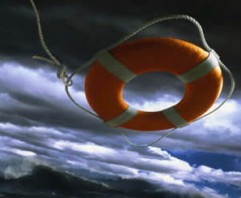
Disaster Recovery is a “science” of two key parameters:
RPO: Recovery Point Objective:
What is the oldest point in time a business can accept if it needed to recover data.
RTO: Recovery Time Objective:
What is the maximum amount of time taken, the business will accept to bring the ‘Services’ back online.
Around these two parameters, an infinite number of permutations arise:
- Should all applications have the same RPO and RTO
- For a given application:
- Do all users of that application require the same RPO and RTO
- What type of disasters is a business looking to avoid
- Disk Failure
- Server Failure
- Data Corruption – Virus attacks, or Applications writing ‘bad data’
- Site Failure
- Theft, Fire, Power Outage, Inability for staff to access the primary office
Each Disaster and it’s ensuing recovery scenario implies a different form of ‘data movement’ and geographic placement of data, and these lead to the most expensive constraints within the ‘DR Equation”, being network costs:
- Is data moving across LANS
- Is data across high speed WAN’s
or
- Is data moving from branch offices across low speed ADSL lines
Across LAN’s, it is possible to shift ‘huge’ amounts of data and protect entire System volumes for purposes of bare-metal restore.
Across WAN’s, it might just be the application data that is moved – which then requires consideration to ensure ‘System State and Operating Systems’ are placed at the DR site for Production start-up.
Then there is the critical ‘Cost Equation‘:
- What technology will enable me to perform DR
- What impact will this have on existing infrastructure and staffing requirements
- and What is the cost of new technology and the ongoing ‘three’ year Total Cost of Ownership
CD-DataHouse has extensive experience in DR and can readily juggle the complex parameters and permutations that affect DR.
Our goal is to optimise and de-risk your implementation – meaning an implementation that has no or minimal requirement to upgrade expensive storage systems or WAN links.
![]() Contact us us today to discuss:
Contact us us today to discuss:

